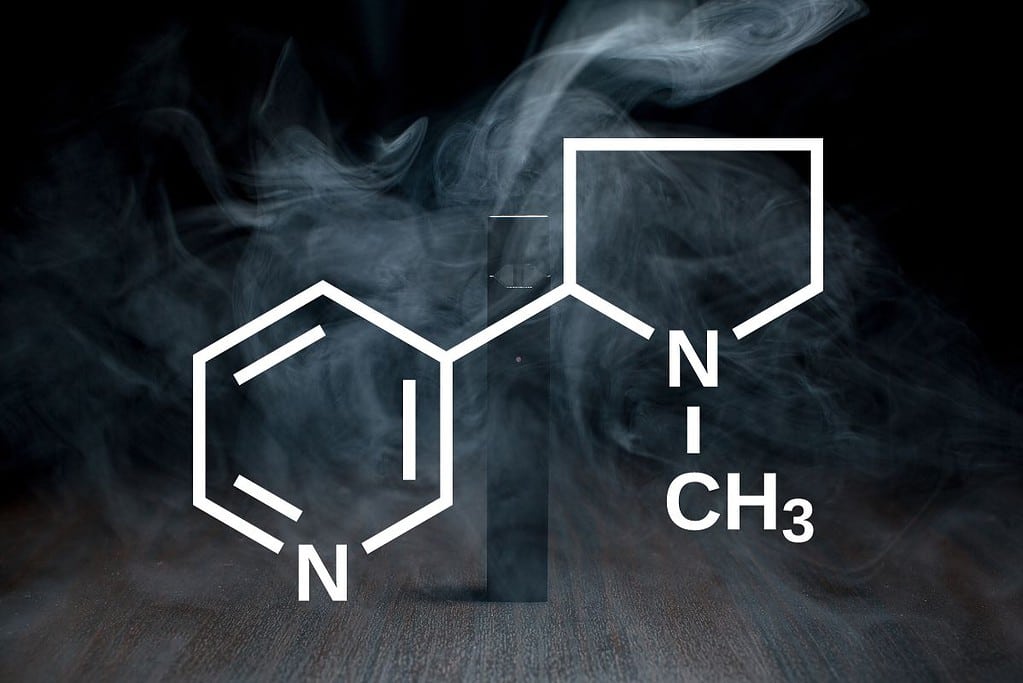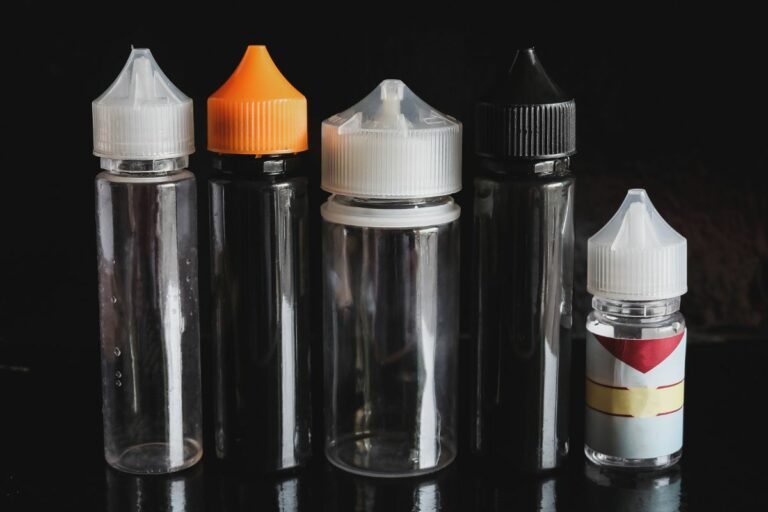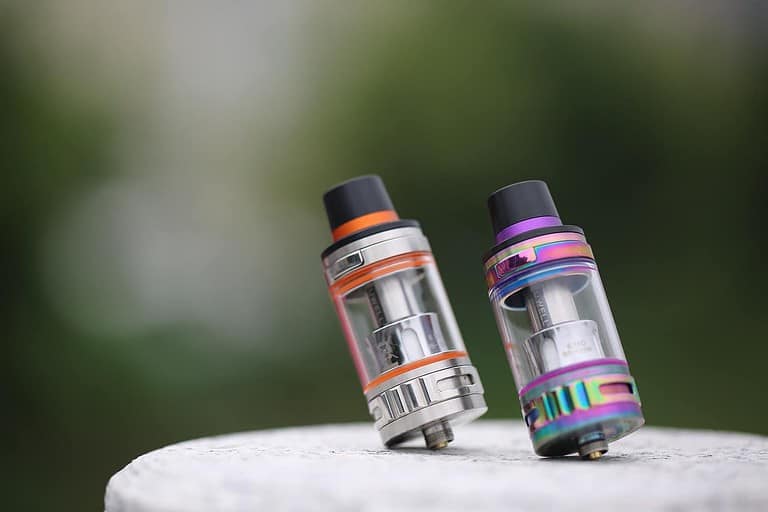How Many Hits of Nic is Too Much: A Concise Guide to Safe Consumption
With the increasing popularity of e-cigarettes and vaping, many people find themselves wondering how much nicotine is too much. Nicotine, an addictive substance found in tobacco products and e-cigarettes, can have harmful effects on the body when consumed in excessive amounts. It is vital for vapers and cigarette smokers alike to be aware of their nicotine intake levels in order to maintain a safe and responsible approach to their habit.
The amount of nicotine that can be considered “too much” can vary significantly from person to person, as factors such as body weight, metabolism, and personal tolerance all impact an individual’s response to the chemical. For some, a few hits of nicotine can induce adverse effects, while others may require higher consumption levels to reach the same threshold. To minimize potential health risks, it’s important to understand what constitutes a safe intake of nicotine and to recognize when one has crossed the line into potentially dangerous territory.
NEW CUSTOMER DISCOUNT
Save 15%
15% OFF YOUR ENTIRE ORDER FOR NEW CUSTOMERS USE CODE WELCOME15!

Studies have shown that regularly consuming high amounts of nicotine can lead to various health issues, including increased heart rate, high blood pressure, and addiction. Because of this, it is essential for both e-cigarette users and traditional cigarette smokers to be mindful of their habits and consider taking steps to reduce their nicotine intake if necessary. By staying informed and monitoring their consumption, individuals can make well-informed decisions about their nicotine use and minimize potential risks to their health.
Table of Contents
Understanding Nicotine
Nicotine is a substance found in the tobacco plant that has addictive properties. It is present in various tobacco and nicotine-containing products, including cigarettes, cigars, chewing tobacco, and smokeless tobacco. Nicotine is also the primary ingredient in e-cigarettes and e-liquids, which have become increasingly popular alternatives to traditional tobacco products.
Nicotine in Different Products
There are a wide range of nicotine levels and strengths in different tobacco and nicotine-containing products. For instance, cigarettes have varying amounts of nicotine, with some brands being milder or stronger than others. Similarly, e-cigarettes and e-liquids come in different nicotine strengths, with some 5% nicotine disposable vapes delivering a stronger dose in a small and portable device.
Chewing tobacco and smokeless tobacco products also contain nicotine. These products are typically used by placing a pinch between the cheek and gum or held in the lip, and the nicotine is absorbed through the oral mucosa. Nicotine in chewing tobacco and smokeless tobacco is available in different concentrations as well.
Nicotine replacement therapies (NRTs) like gum, patches, and lozenges are designed to help people quit smoking by providing a controlled dose of nicotine without the harmful additives found in tobacco products. These options vary in strength and duration of nicotine release, allowing individuals to tailor their treatment according to their needs and preferences.
While nicotine levels vary across different products, understanding these differences can help individuals make informed decisions about their consumption, whether they’re looking for a potential aid in quitting smoking or simply seeking a less harmful alternative to traditional tobacco products.
When using e-cigarettes or other vaping devices, it’s crucial to be aware of the 510 thread battery for consistency in performance. Users should also explore other options like CBD gummies that may offer an alternative way to relax and cope with anxiety without nicotine’s addictive properties. Remember to consume nicotine products responsibly and seek professional advice if considering quitting smoking or using nicotine products for the first time.
Health Risks of Excessive Nicotine

Nicotine is a highly addictive substance found in tobacco products and e-cigarettes. Consuming excessive amounts of nicotine can lead to various health problems and even be fatal in extreme cases.
- Overdose and toxic effects: Nicotine overdose can be life-threatening, causing symptoms such as nausea, vomiting, abdominal pain, seizures, and difficulty breathing. When nicotine reaches toxic levels in the body, the risk of seizures and respiratory problems increases. In severe cases, the person might require the use of a ventilator.
- Cardiovascular problems: Excessive nicotine consumption is linked to increased heart rate and elevated blood pressure. This can put strain on the heart and lead to an increased risk of heart disease over time. Additionally, the vasoconstrictive effects of nicotine can lead to reduced blood flow to vital organs, further increasing the risk of cardiovascular problems.
- Breathing issues: High levels of nicotine can adversely affect the respiratory system, causing shortness of breath, coughing, and wheezing. Chronic use of nicotine can also lead to respiratory illnesses such as chronic obstructive pulmonary disease (COPD) and lung infections.
To avoid these adverse health effects, it is essential to monitor nicotine intake and recognize the signs of overconsumption. Quitting tobacco or e-cigarette use can be challenging due to withdrawal symptoms; however, understanding the vaping withdrawal timeline can help individuals plan and persevere through the process.
Effects on Different Population Groups
| Population Group | Effects of Nicotine |
|---|---|
| Adults and Smokers | – Nicotine is highly addictive and can lead to physical dependence.<br>- It stimulates the release of dopamine, providing a pleasurable sensation, which reinforces smoking or vaping habits.<br>- Nicotine raises blood pressure and heart rate, increasing the risk of cardiovascular problems.<br>- It can contribute to various health issues such as lung disease, cancer, and heart disease, especially when consumed through tobacco products. |
| Adolescents | – Adolescents are particularly vulnerable to the addictive properties of nicotine, and early exposure can lead to long-term addiction.<br>- Nicotine can negatively affect brain development in teenagers, potentially impairing memory, attention, and impulse control.<br>- Adolescent use of nicotine-containing products like e-cigarettes has been associated with a higher risk of future tobacco use. |
| Pregnant Women | – Nicotine exposure during pregnancy can harm fetal development and is associated with low birth weight, preterm birth, and developmental problems in the baby.<br>- Smoking or using nicotine-containing products during pregnancy increases the risk of stillbirth and sudden infant death syndrome (SIDS). Pregnant women are strongly advised to avoid nicotine use. |
| Individuals with Mental Health Conditions | – People with mental health disorders, such as depression or anxiety, may be more prone to nicotine addiction as they may use nicotine as a form of self-medication.<br>- Smoking is more prevalent among individuals with certain mental health conditions, leading to increased health risks. |
| Seniors | – Nicotine can have adverse effects on seniors, including potential interactions with medications and exacerbation of certain health conditions.<br>- Long-term nicotine use may contribute to cognitive decline and an increased risk of conditions like Alzheimer’s disease.<br>- Older adults who smoke may experience worsened respiratory and cardiovascular health. |
| Athletes and Fitness Enthusiasts | – Nicotine is considered a performance-enhancing substance, as it can improve concentration, alertness, and endurance in some athletes.<br>- However, long-term nicotine use can have negative health effects, such as increased heart rate and blood pressure, which can be detrimental to overall fitness and health. |
Different population groups might experience varying levels of sensitivity to nicotine, and thus, the number of hits that can be considered too much also differs. This section will discuss the effects of nicotine on children, as well as pets.
Effects on Children and Adolescents
The developing brains of children and adolescents are more susceptible to the harmful effects of nicotine. Research has shown that nicotine exposure during adolescence can lead to addiction, impair cognitive function, and affect the development of neural circuits and synapses in the brain 1. Therefore, it is crucial to minimize the exposure of nicotine in this age group. While the exact number of hits that can be considered too much for children and adolescents is difficult to determine, any exposure to nicotine should be avoided.
Effects on Pets
Nicotine can be toxic to pets, especially dogs and cats. Common symptoms of nicotine poisoning in pets may include drooling, vomiting, diarrhea, tremors, increased heart rate, and even seizures or death 2. The amount of nicotine required to cause these symptoms can be as low as 1 milligram per kilogram of body weight in dogs and even lower for cats 3. As a result, it is essential to keep nicotine-containing products such as e-cigarettes or nicotine gum away from pets to prevent accidental ingestion.
Symptoms of Nicotine Poisoning

Nicotine poisoning, also known as “nic sick,” can occur when a person consumes too much nicotine, either through smoking, vaping, or other forms of nicotine intake. The symptoms of nicotine poisoning can range from mild to severe and usually onset quickly after excessive nicotine consumption.
One common symptom of nicotine poisoning is vomiting. This is the body’s natural response to expelling the excess nicotine from the system. In addition to vomiting, individuals may also experience nausea, headache, and diarrhea. These symptoms are often indicative of the body’s attempt to regulate itself and return to a balanced state.
Another sign of potential nicotine poisoning is pale skin. This can occur as a result of reduced blood flow or poor circulation caused by excessive nicotine intake. Pale skin may also be accompanied by increased heart rate and elevated blood pressure, as the body tries to compensate for the overstimulation caused by excessive nicotine consumption.
It is important to recognize these symptoms and take action to reduce nicotine intake if they are experienced. Reducing or discontinuing nicotine consumption is often the most effective way to alleviate the symptoms and prevent further complications. If symptoms persist or worsen, it is advisable to consult a healthcare professional for further assessment and management.
Safe Nicotine Consumption Levels
| Nicotine Consumption Level | Description |
|---|---|
| Non-Use | The safest approach is to avoid nicotine consumption altogether, especially if you have never used nicotine products before. |
| Smoking Cessation | If you’re using nicotine as a smoking cessation aid, work with a healthcare professional to determine an appropriate nicotine replacement therapy (NRT) plan. This may involve gradually reducing nicotine levels over time. |
| Low Nicotine Intake | For individuals who choose to vape or use smokeless tobacco, aim for low nicotine concentrations in e-liquids or products. Start with the lowest available strength and only increase if necessary. |
| Avoiding High Nicotine Products | Avoid using high-nicotine products, such as unregulated or black-market e-liquids, which can be extremely potent and dangerous. |
| Monitoring Symptoms | Pay attention to your body’s response to nicotine. If you experience symptoms like dizziness, nausea, increased heart rate, or other adverse effects, consider reducing your nicotine intake or quitting. |
| Nicotine-Free Alternatives | Consider using nicotine-free alternatives if you enjoy the act of vaping or smoking without the nicotine. This can minimize health risks. |
| Regular Health Checkups | If you’re a long-term nicotine user, schedule regular health checkups with your healthcare provider to monitor any potential health effects and discuss strategies for reducing nicotine use. |
Determining safe nicotine consumption levels depends on factors such as individual tolerance, nicotine source, and frequency of use. In general, nicotine levels in e-cigarettes and vaping devices may vary widely. Some disposables provide as much as 6000 puffs, with a nicotine concentration of 5%.
However, it is essential to consider the milligrams (mg) of nicotine consumed when assessing safety. A standard pack of cigarettes contains around 10-20mg of nicotine. To put this into perspective, disposable vapes like the Candy King Air deliver 5% nicotine concentration. This equates to approximately 50mg of nicotine per milliliter of e-liquid, a substantial amount compared to traditional cigarettes.
Lethal doses of nicotine are rare, but they can occur. It is estimated that the lethal dose of nicotine for an adult is around 30-60mg, though individual tolerance can vary. Therefore, it is crucial to be mindful of the nicotine levels in e-cigarettes and disposable vapes, such as the Esco Bars Ripe Collection 2500, which offers 6mL of prefilled e-liquid.
When using e-cigarettes and vaping devices, users should monitor their intake and aim for moderation. It is also advisable to gradually reduce nicotine concentration levels, which can help in managing potential addiction risks. Remember, while alternatives like vapes and e-cigarettes may be considered less harmful than traditional cigarettes, they still carry risks due to nicotine consumption.
Seeking Medical Help

When dealing with nicotine overdose or the symptoms of consuming too much nicotine, it is crucial to seek medical help. One should consult a doctor or a healthcare professional immediately if experiencing symptoms such as rapid heartbeat, vomiting, dizziness, or difficulty breathing. These are signs that indicate the need for urgent medical attention.
The CDC provides important information regarding nicotine poisoning and how to handle cases of suspected overdose. They emphasize that nicotine is a potent and highly toxic substance; therefore, it is essential to act promptly if an individual experiences an overdose.
The American Association of Poison Control Centers plays a vital role in helping people who may have consumed too much nicotine. If in doubt about the severity of the symptoms or if it is unclear whether someone ingested nicotine, calling a local poison control center can provide valuable guidance. Additionally, seeking reliable information on vaping and e-cigarette products, such as Vape Clutch Coupon Codes, is also beneficial to avoid consuming excessive amounts of nicotine.
In conclusion, prompt medical help is indispensable when it comes to the suspicion or occurrence of a nicotine overdose. Consulting a doctor, utilizing resources from the CDC, and seeking assistance from the American Association of Poison Control Centers are all effective and essential steps to take during such situations.
Browse popular vape collections:
- Nicotine Disposables
- 2000 Puff Nicotine Disposable Vapes
- 2500 Puff Nicotine Disposable Vapes
- 5000 Puff Nicotine Disposable Vapes
- 6000 Puff Disposable Nicotine Vapes
- 7000 Puff Nicotine Disposable Vapes
- Disposable Vape Deals
- Best Vape Brands
- 8000 Puff Nicotine Disposable Vapes
- 9000 Puff Nicotine Disposable Vapes
- 5% Nicotine Disposable Vapes
- Rechargeable Nicotine Disposable Vapes
- Vape Coils
- Dab Wax Pens
- Dab Wax Pen Battery
- Yocan Vapes
- Vape Cases
Frequently Asked Questions
How many puffs are equivalent to one cigarette?
Estimating the number of puffs equivalent to one cigarette can be difficult, as it depends on the nicotine concentration in the e-liquid and individual vaping behaviors. However, a general rule of thumb is that around 10 to 15 puffs may be equivalent to one traditional cigarette.
How many puffs per day is considered excessive?
There is no definitive answer for what constitutes “excessive” vaping, as it depends on individual preferences and nicotine tolerance. However, it’s important to monitor your nicotine intake and listen to your body’s signals. If you experience symptoms such as headache, dizziness, or nausea, it may be time to cut back on your vaping frequency.
What is the safe limit for vaping nicotine?
The safe limit for vaping nicotine is subjective and varies from person to person based on factors such as body weight, nicotine tolerance, and individual health. It’s important to start with a lower nicotine strength if you’re new to vaping and gradually increase, as needed, to avoid ingesting too much nicotine at once.
How does 30 mg nicotine compare to cigarettes?
A 30 mg nicotine e-liquid is considered relatively high in strength. To compare, the nicotine content in a traditional cigarette typically ranges between 0.5-2.5 mg of nicotine per smoke. Vaping a 30 mg nicotine e-liquid delivers more nicotine per puff than smoking a cigarette, so it’s important to use caution and monitor your intake.
Is there a way to gauge remaining puffs in a vape?
Some vape devices, such as 5000 puff disposables, provide an estimated number of puffs before they need to be replaced. To gauge your remaining puffs, you can keep track of how often you vape and compare it to the device’s advertised puff count. Please keep in mind that this method is not always precise and may vary depending on how deeply and frequently you inhale.
How many puffs can you get out of a 10ml e-liquid?
The number of puffs you can get out of a 10ml e-liquid depends on factors such as the vaping device, the coil size, and your puffing style. However, as a rough estimate, you may expect to get around 900 to 1800 puffs for a 10 ml bottle with a low-power device. Bear in mind that this number can vary widely among different vapers and setups.








